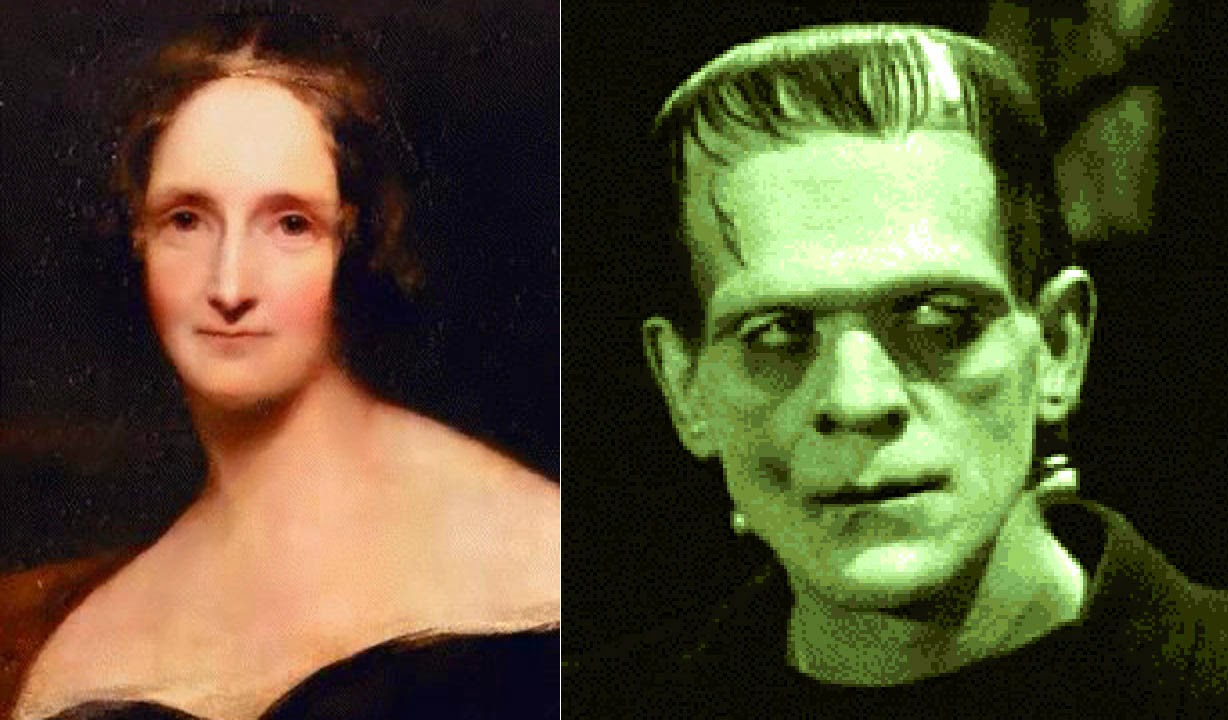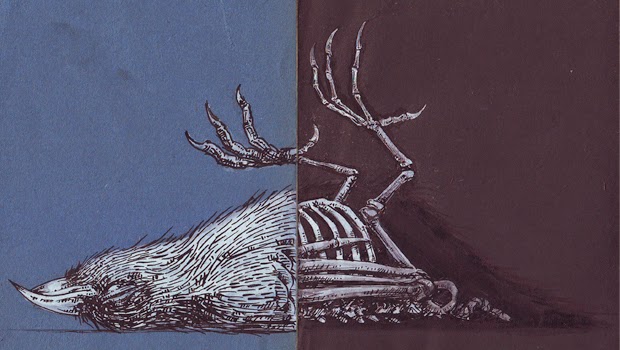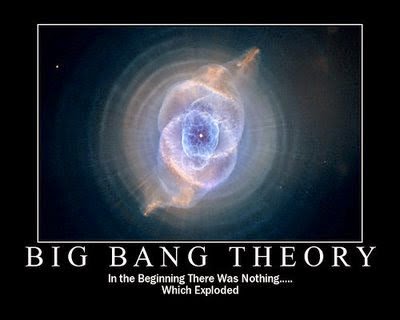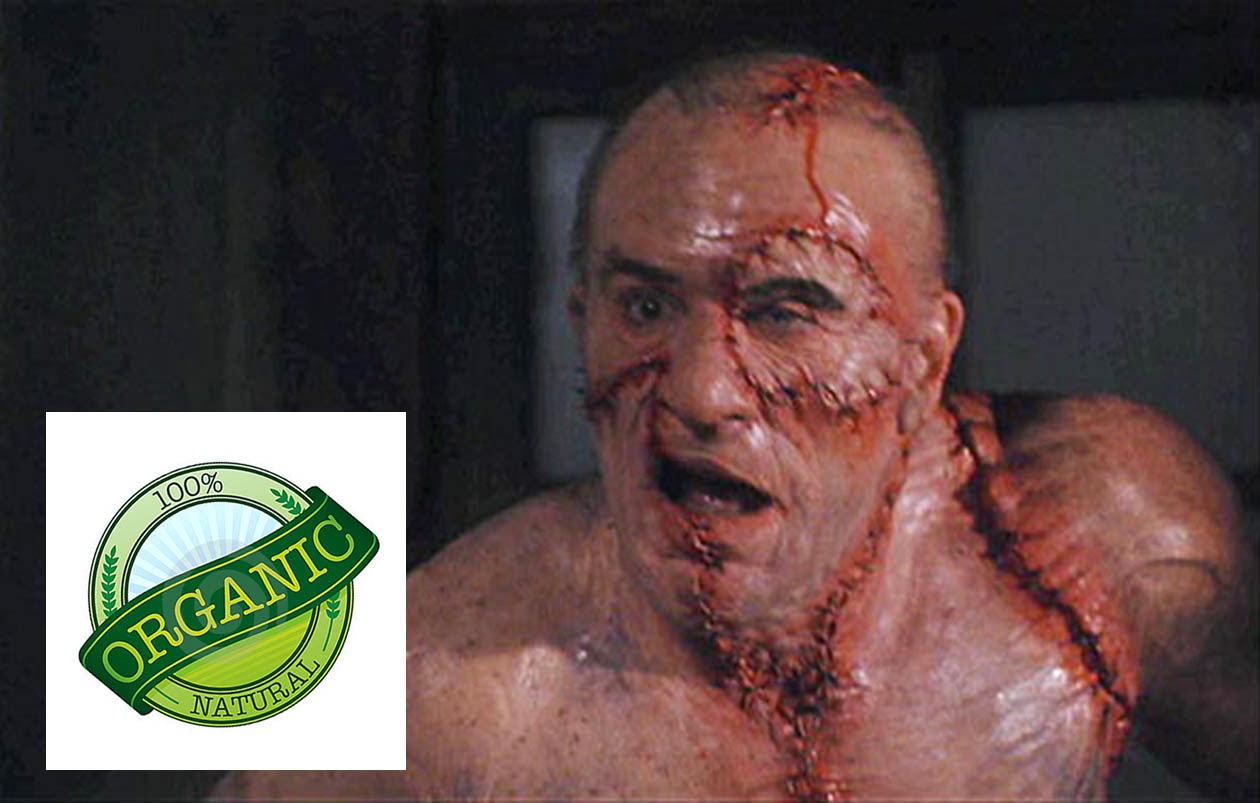Biology concepts – Frankenstein, asystole, ethics, genetically modified organisms, genetically modified foods, synthetic biology, decomposers, electroconvulsive therapy
The retraction of the 2012 study of Seralini in Food and Chemical Toxicology can be found here. It was republished in modified form in the journal, Environmental Sciences Europe in 2014, but with no peer-review.
Goldstein, D. (2014). Tempest in a Tea Pot: How did the Public Conversation on Genetically Modified Crops Drift so far from the Facts? Journal of Medical Toxicology, 10 (2), 194-201 DOI: 10.1007/s13181-014-0402-7
Tufarelli V, & Laudadio V (2013). Genetically Modified Feeds in Poultry Diet: Safety, Performance and Product Quality. Critical reviews in food science and nutrition PMID: 24915369
Van Eenennaam AL, & Young AE (2014). Prevalence and impacts of genetically engineered feedstuffs on livestock populations. Journal of animal science, 92 (10), 4255-78 PMID: 25184846
Snell C, Bernheim A, Bergé JB, Kuntz M, Pascal G, Paris A, & Ricroch AE (2012). Assessment of the health impact of GM plant diets in long-term and multigenerational animal feeding trials: a literature review. Food and chemical toxicology : an international journal published for the British Industrial Biological Research Association, 50 (3-4), 1134-48 PMID: 22155268
McCall WV, Andrade C, & Sienaert P (2014). Searching for the mechanism(s) of ECT's therapeutic effect. The journal of ECT, 30 (2), 87-9 PMID: 24755719
Who's the victim of the story? Is it Dr. Frankenstein, who’s family is murdered or is it perhaps his monster, who was brought into the world and abandoned? He lives his second life shunned by all, misunderstood, lonely, unable to live with dignity or even die at all.
This is a big story for a 17 year old to pen. Yep, that’s how old Mary Shelly was when she wrote Frankenstein (published when she was 21 in 1818). Despite her age and inexperience, she rolled out one of the greatest novels ever. It was both romantic and a criticism of romance. It sparked the science fiction genre and was the beginning of horror stories.
The movies and stories about Frankenstein’s monster usually highlight the way in which the monster was created and his ugliness and hatred, but that isn’t what the book is about. It’s a story of responsibility in science and toward others.
The Age of Enlightenment had just ended when Frankenstein was written, and the Romantic period was in full bloom. A switch from science to emotion meant that the facts and discoveries about the world now needed to be examined, not just accepted. Here was Mary found her message – a person must be responsible for the things he/she creates – be they physical things, knowledge, or opinion.
This was combined with the advances in electricity at the time. Just before 1800, Luigi Galvani had published on the ability of electricity to excite the muscles of dead animals – the innate electrical force of living tissue came to be known as “galvanism.” In 1803, Galvani applied an electrical charge to the corpse of executed murderer Thomas Forster, and the body jolted and moved – a good visual for Mary.
So could a body be reanimated as Shelly relates in the novel? Nope…. at least, not yet. Let’s examine why.
Dr. Frankenstein uses a corpse, with some implied modifications through surgery. Not good. Immediately after death, cells that are starved for oxygen stop making ATP. ATP is required to maintain lipid membrane compartments and in general for the integrity of the cell. Once there is no oxygen and no flow of energy, the enzymes designed to break down wastes, toxins, and old organelles for recycling are released to the cytoplasm and start to destroy the cell.
Consider the process of rigor mortis. Muscle contraction requires ATP not to contract, but to release the contraction (see this post). With no ATP, the muscles become rigid in their contraction about 3-4 hours after death. Rigor lasts for about 12-20 hours, and is only released by the process of cell destruction that we described above.
What about the electrical problem? We use electricity in our neural system and in our heart. Your brain is an electrochemical machine, using ions to generate and electrical current down axons. Electroconvulsive therapy (ECT) is useful in treating some forms of depression and schizophrenia and mania, but we don’t really know how it works yet.
Several hypotheses exist; none or all of which may be correct. ECT may alter neurotransmitter concentrations, which would change the degree to which impulses are transferred or suppressed from one neuron to another. It may work to prune back some neural connections in the brain, or it may work to stimulate hormone release that could alter the brain chemistry. A 2014 reviewprovides more information on the various theories of ECT mechanism.
Mary’s error: electrical shock won’t start a stopped heart (called asystole, a = not, and systole = contraction), despite what you’ve seen on the TV shows. For asystole, the treatment is CPR with a shockingly large dose of adrenaline every 5 minutes.
Dr. Frankenstein couldn’t have reanimated his self-digesting, microbiological dinner plate of a corpse with an electric shock, but if the muscles hadn’t gone into rigor yet, he might have been able to get a short slam dance out of him. But then, this isn’t really the point of the story.
Frankenstein’s monster was alive and wandering the world alone a mere 1/5 of the way through the story, so it’s really a story of how to deal with the products of science. Erasmus Darwin (Charles’ grandfather) had introduced the idea of mutations or “monstrosities” being passed on or inherited – so Mary now had the essence of the story. Who is the monstrosity - the monster or the scientist who creates and then abandons it?
The issue most often compared to Frankenstein’s monster is genetically modified organisms (GMOs). Have you heard the term, “Frankenfoods?” This is the name that opponents of GMOs and particularly GM foods use to taint the agricultural biotechnology industry.
The fear is that by tampering with nature and introducing genes into organisms, we are creating monsters that might have unexpected effects on us. It’s a good marketing campaign idea, and it has stuck in the minds of the public.
Europe and Russia have banned all GM foods out of fears that they may contain toxins or mutagens that would harm the consumers. One fear is that DNA from the genetically modified organisms would be transferred to the eater and combine with their own DNA. That is a scary sounding idea.
The problem is, you take up DNA from the food you eat every day, although not whole genes as the fear warrants. Digestion breaks down DNA, so we take up mostly nucleotides and short stretches of nucleic acid. No recorded evidence exists of uptake of an entire gene.
In 2012, a researcher named Seralini from the U. of Caen announced that an herbicide used with GM foods (glyphosate in Roundup) causes tumors. He didn’t just publish it, he had a press conference and concurrent release of his book on the subject and videos in three different languages. It turns out that he also had a company that was preparing to market a product as a “protectant” against glyphosate. The study was subsequently retracted, but a modified version with a conclusion that “more study is needed” was re-published in a lesser journal (see note below).
Other studies on the dangers of GM foods have been correlative, meaning that when you see “A”, you often see “B.” But that doesn’t mean that A causes B, or that B causes A. Remember this: correlation does not imply causation.
The truth is, we need more studies. There are real issues to be dealt with, such as - does introduction of a particular gene cause plant toxins to be increased – this could be bad for us. The idea is the same as in Mary Shelly book – we must be responsible for those things we make. No GMO or GM food should go to market without extensive testing.
The testing to date shows that there are no health risks associated with GM foods. Longitudinal studies from 2014, 2013, and 2012 of live stock feeds showed that animals fed GM crops over five generations showed no ill health effects and their meat was exactly like that of animals fed conventional feed. By the middle of 2013, over 600 studies showing that GM foods carried no health risks had been peer-reviewed and published. The key is always the same - responsible and thorough testing.
a 2014 editorial on the safety of GM foods was written by a Monsanto employee, the company that markets GM corn and soybeans. Society must be diligent and demand topnotch, transparent, and responsible science. This was one of Shelly’s themes, Frankenstein conducted his work in private, with no comment from society about how or whether it should be done at all.
The next generation of people will have more issues to deal with, like synthetic biology (not merely taking a gene from one organism and putting it another, but constructing a gene or genes from nucleotides and then inserting them). How to ensure good use of science? - transparent methods and results, no hidden agendas, no jumping to conclusions, and a very science literate population that can judge and reason for themselves. And that’s why we learn biology.
Next week - Halloween is a time to focus on what's scary and what's dead. Can you actually be scared to death?
Next week - Halloween is a time to focus on what's scary and what's dead. Can you actually be scared to death?
The retraction of the 2012 study of Seralini in Food and Chemical Toxicology can be found here. It was republished in modified form in the journal, Environmental Sciences Europe in 2014, but with no peer-review.
Goldstein, D. (2014). Tempest in a Tea Pot: How did the Public Conversation on Genetically Modified Crops Drift so far from the Facts? Journal of Medical Toxicology, 10 (2), 194-201 DOI: 10.1007/s13181-014-0402-7
Tufarelli V, & Laudadio V (2013). Genetically Modified Feeds in Poultry Diet: Safety, Performance and Product Quality. Critical reviews in food science and nutrition PMID: 24915369
For more information or classroom activities, see:
Genetically modified organisms/foods –






